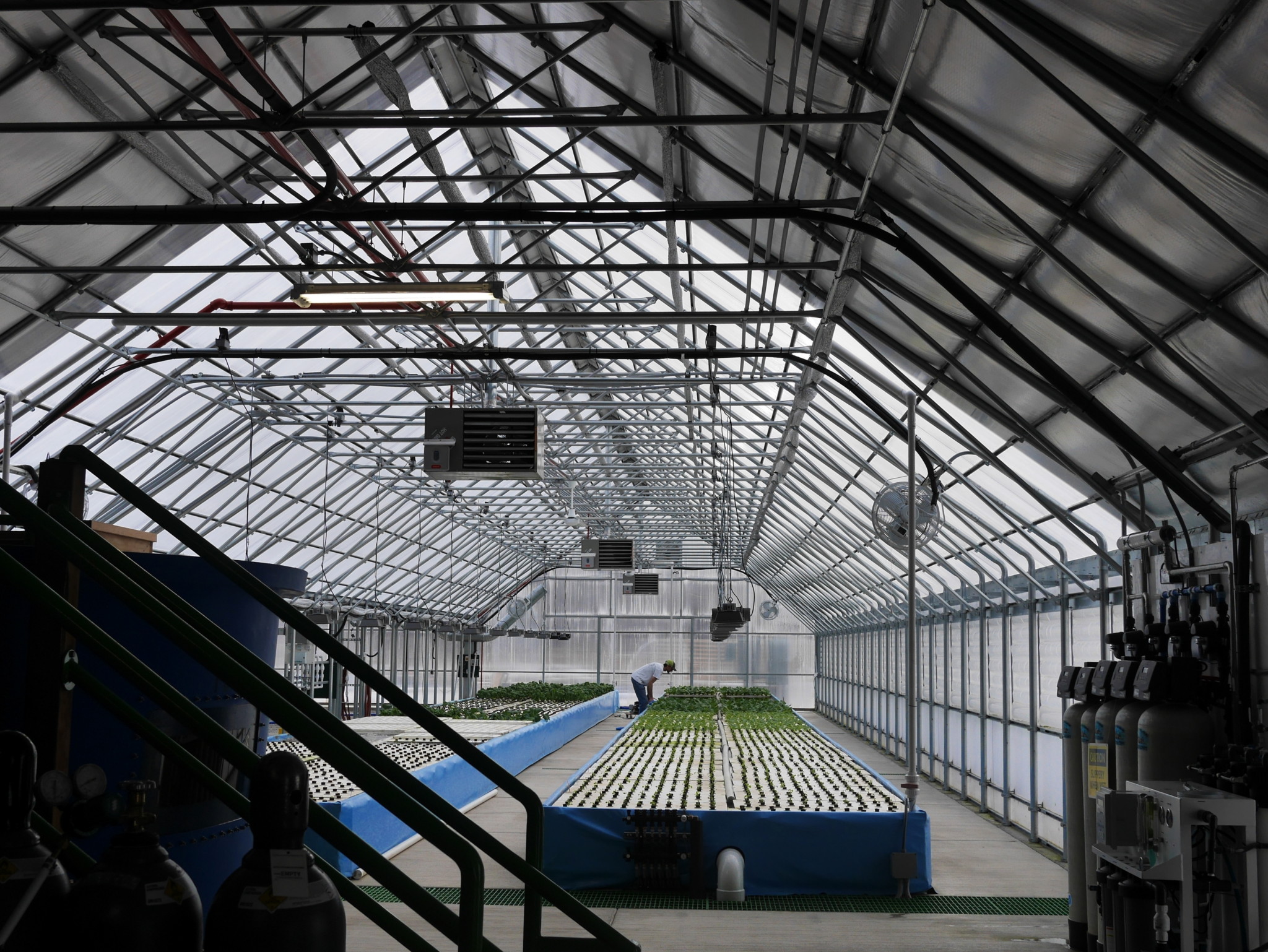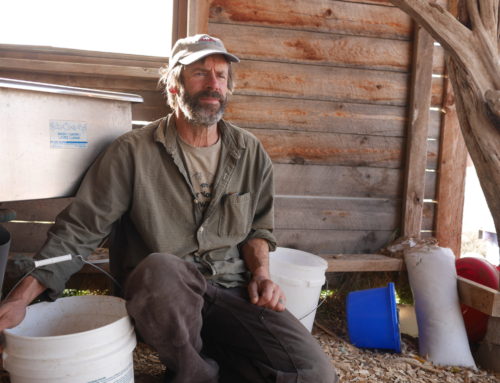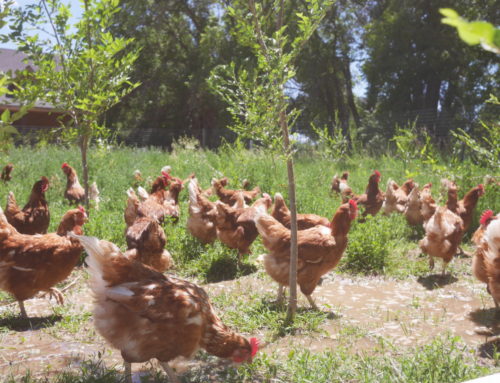Walking into the South River Aquaponics greenhouse on a cold, grey January day is like walking onto another planet–or rather, kind of like entering a sci-fi movie where astronauts are learning to grow vegetables in space. As Giovanni Mendoza, SRA’s director of operations, gives me a tour around the facility, I’m amazed by both the complexity and the simplicity of the operation. We make sure to wash our hands and wipe our feet on a special mat to prevent contamination before we enter the bio-secure facility. Once inside, it is warm and bright and filled with vibrant greens. There is a quiet rush of water swirling in giant blue tanks and a hum from the pumps that circulate the water from fish tanks through the reservoirs where rafts of lettuce, arugula, and herbs grow.

South River’s state-of-the-art facility in Montrose is part high-tech farm and part laboratory. It is the testing ground for a new type of agriculture, one that can provide food year round, even in the cold mountain climate of Western Colorado. The concept is simple: fish feed the plants, plants clean the water. As opposed to traditional hydroponic systems that rely on lots of artificial chemical inputs to keep plants growing, aquaponics uses fish to generate the fertilizer needed to grow vegetables in water.
At South River, the process starts with Barramundi (Asian Sea Bass). Baby “fingerling” fish are raised in nursery tanks, then transferred to large blue tanks where they swim, eat, and poop. The waste they produce is filtered out of the tanks and run through a separator. The solids are removed and turned into organic fertilizer. The remaining nutrient-filled water is syphoned off into vegetable growing reservoirs. There, plants use up the phosphorus, potassium, and nitrogen in the water, naturally filtering it in the process. The clean water is then fed back into the fish tanks. In this symbiotic system, both fish and vegetables are harvested, providing a sustainable local source of seafood in addition to greens throughout the year.
As the South River team learns more about their system, they continue to add innovations that help close the loop even more. Soon, they will be producing around 800 pounds of mushrooms a week in a room next door to the greenhouse. The CO2 that the mushrooms put off while growing will be pumped into the greenhouse, which will help boost vegetable growth. Dave, SRA’s fish biologist, is also working to introduce fresh water lobster to system. They will live at the bottom of the vegetable reservoirs, helping to clean the water and tanks as they feed.
When you think of local, organic farming, a setup like South River isn’t necessarily what comes to mind. There’s no dirt to be seen and the farmers are dressed in logo-embroidered shirts, not overalls and straw hats. However, this type of farm is at the cutting edge of conservation and sustainable and safe food production. Because aquaponics recycles its water from fish to veggie tank and back, it can use up to 90% less water than a traditional farm. Since the plants get their nutrients from fish waste, no artificial inputs are required (in fact, adding chemical fertilizers or pesticides would harm the fish). Greenhouses can be set up on land that wouldn’t be normally be suited for agriculture. Water is tested weekly for any pathogens and fertilizer from fish (as opposed to other animals) does not carry E. coli or Salmonella. Growing all year in a greenhouse keeps food distribution local and helps eliminate the need to ship vegetables from California and Mexico.
South River Aquaponics is committed to feeding our communities with healthy, safe, and nutritious food–and to educating more people about the benefits of using aquaponics to address food needs around the world. They hope their facility will be a prototype for what is possible. Though they’ve invested a lot of money into the project, the information they have gathered is invaluable. They hope to help others build similar systems at a much lower cost. We’re excited to see what new and exciting projects SRA has up its sleeve next!



![Farmers in Focus: Zimmerman Pork [and veggie] Farm](https://farmrunners.com/wp-content/uploads/2017/05/p1840797-e1679522915634-500x383.jpg)
